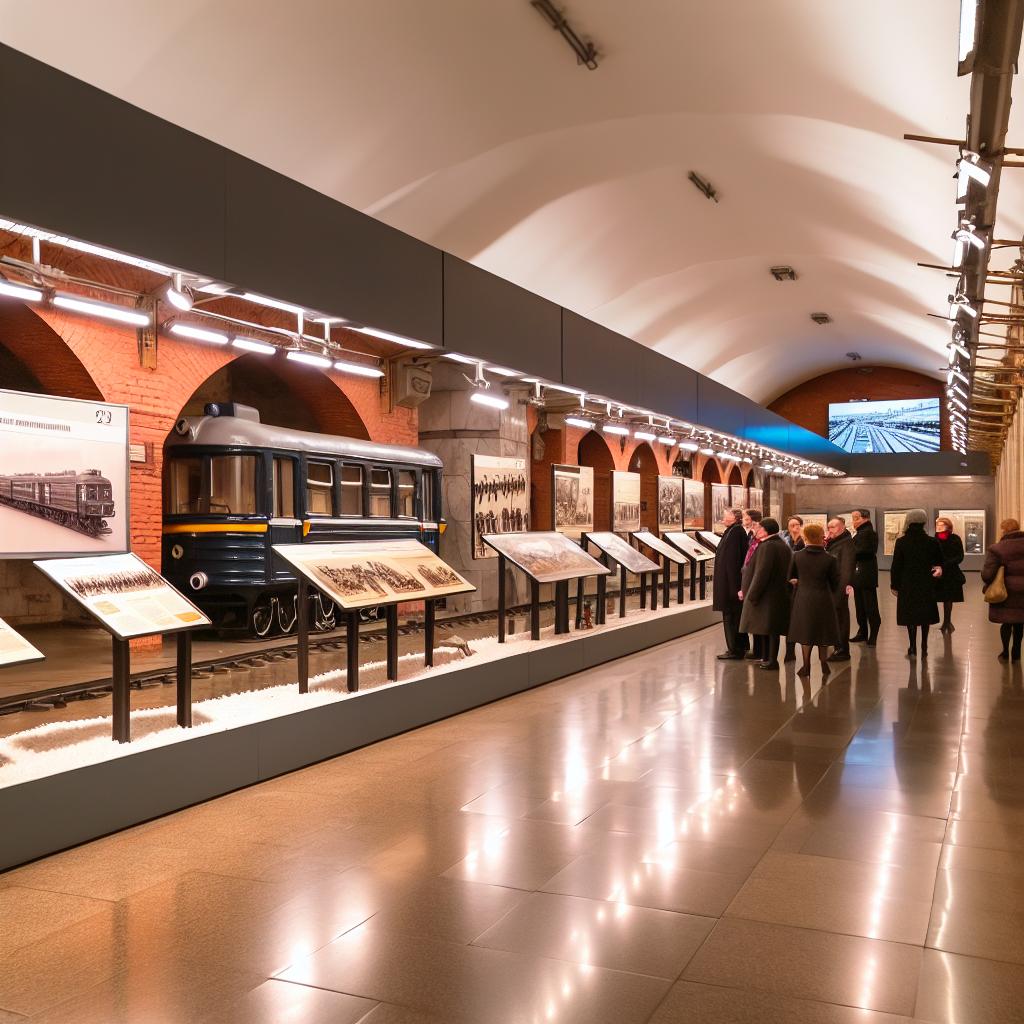Moscow Metro Museum: An Overview
The Moscow Metro Museum presents a captivating exploration into the vast history and development of the Moscow Metro system, recognized as one of the most complex and efficient subway networks in the world. It was established in 1967, making it an integral stop for those with a keen interest in urban transit systems and Soviet-era architectural styles. The museum not only documents the technical achievements of this extensive network but also serves as a testament to its cultural and historical significance.
Exhibitions and Collections
Within its walls, the museum houses a plethora of artifacts that chart the growth and transformation of the metro’s construction and daily operations over various decades. Visitors are often intrigued by the detailed models of different metro cars on display, offering a microcosm of the technological advancements across time. The museum showcases exclusive documents, rare photographs, and essential tools that played pivotal roles in the metro’s construction endeavors. Notably, the collection emphasizes the distinctive Soviet-era designs that are characteristic of Moscow Metro stations, often colloquially referred to as “underground palaces” due to their ornate architectural features.
Interactive Displays
In addition to static displays, the museum caters to a wider audience by offering several interactive exhibits. These installations allow visitors to delve deeper into multimedia presentations that demonstrate the engineering challenges and breakthroughs that have enabled the metro’s continual expansion. A highlight for many is the set of simulators available. These simulators provide an opportunity for visitors to experience the thrill and responsibility of driving a metro train, offering a hands-on appreciation of the complexities involved in operating within this intricate network of railways.
Historical Context
The museum does not merely focus on the technicalities but also delves deeply into the cultural and historical backdrop that shaped the Moscow Metro. Initially opened in 1935, the metro project was a monumental effort that showcased Soviet engineering skill. Throughout its history, the metro has been more than just a transportation system—it has been a conduit of historical events and societal shifts. During World War II, the metro stations played crucial roles as bomb shelters, offering refuge during some of the most tumultuous times. The museum also sheds light on the metro’s expansions during the Cold War era—a period characterized by technological competition and urban development.
Visiting Information
The Moscow Metro Museum is conveniently situated at 2 Paveletskaya Square, Moscow, and is easily accessible via the Paveletskaya metro station. Potential visitors should verify current visiting conditions by consulting the museum’s official website or directly contacting the museum. Useful details such as opening hours, entrance fees, and available guided tours can be found through these sources. Understanding these logistics will help visitors make the most out of their museum experience.
Whether you hold a deep fascination with the history of transportation or possess a burgeoning curiosity about one of the most iconic metro systems on the globe, the Moscow Metro Museum offers a thorough and enriching experience. Its diverse exhibits, interactive technologies, and focus on historical context collectively tell the story of not only a transportation network but also a vital aspect of Moscow’s cultural heritage.
At the heart of the museum’s allure is its comprehensive approach to narrating the evolution of the metro system, spotlighting milestones in engineering and architecture. The collection serves as a testimony to human ingenuity, reflecting leaps in innovation and design that have occurred over the decades. Each exhibit unveils an aspect of the story—a chapter of a living transport network that has continuously adapted to the growing needs of its users.
Moreover, the museum extends beyond historical narrative by offering visitors immersive experiences that bridge the past with the present. These engagements stimulate a more profound understanding of the complexities involved in maintaining and operating a metro system of such impressive scope.
Through focused exploration, visitors are presented with varied perspectives, be it the technical triumphs of the Soviet era, or the modern-day marvels that define one of the busiest underground systems. The museum acts as a hub of knowledge, providing insights that range from urban planning strategies to case studies of problem-solving in urban settings.
The Moscow Metro Museum succeeds in encapsulating the essence of a transport network that is not only a logistical feat but also an emblematic reflection of the socio-political landscape through different periods in history. As urban landscapes continue to evolve, reflecting changing demands and technological advancements, the museum stands firm as a preserver of the past, offering visitors a window into a unique intersection of transportation history and cultural identity.
Finally, visiting the museum is not just about observing static displays; it is about engaging with a vibrantly alive piece of Moscow’s urban framework. The museum’s interactive elements breathe life into the history, allowing visitors to become active participants in a story that continues to unfold.
The Moscow Metro Museum thus remains a significant cultural institution, inviting people to consider not only where they’ve been but where they’re headed in the realm of urban transportation and public infrastructure. Whether you are a student, a professional, or a curious traveler, the museum promises to offer a nuanced and comprehensive understanding of a metro system that has both literally and figuratively moved millions since its inception.

